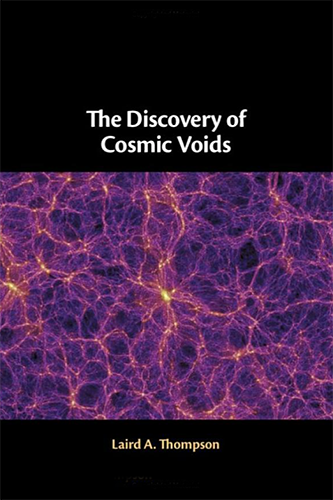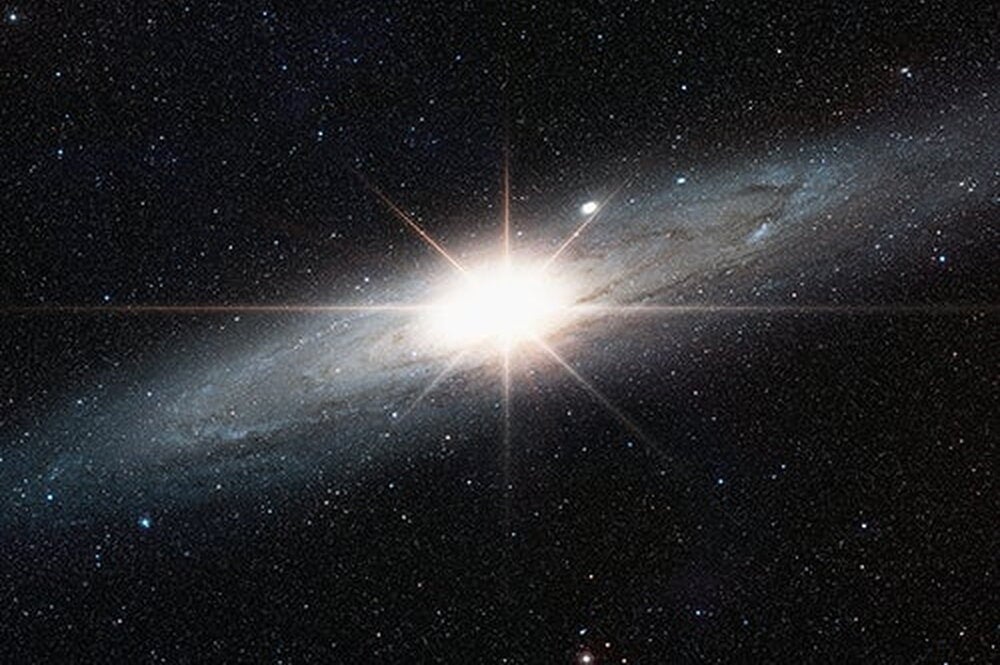

“The Discovery of Cosmic Voids” is a newly released account of the history of one of the more important discoveries in astronomy in the last century. But the perspective of an astronomy professor from the University of Illinois isn’t just about exploring vast tracks of outer space; it’s also about the extended journey to have your findings accepted.
“Some have said that great discoveries fit into a pattern,” said Laird Thompson, a professor emeritus of astronomy who worked at the U of I for 27 years before retiring in 2014. “At first everyone rejects the new idea and describes it as being totally implausible, but then a point is reached when the discovery becomes so obvious that everyone agrees that they knew it from the start.”
During his career at Illinois, Thompson’s research interests included the construction of instrumentation used on ground-based telescopes, especially adaptive optics and laser guide stars. He also taught many courses before his retirement, including introductory astronomy and, for 10 years, galaxies and cosmology.
He has continued working during retirement, with his latest book discussing a pivotal chapter in his career: the discovery process of cosmic voids that began with observations of galaxies in 1978 and continued through 2003 with the work of others to explain how voids and supercluster structures emerge naturally in the cosmos. The observations and theories are summarized in a multipage timeline in the book.
Thompson's “The Discovery of Cosmic Voids,” published by Cambridge University Press, discusses pioneering work of Thompson and his collaborator, astronomer Stephen A. Gregory (BS, ’70, astronomy), regarding the vast empty spaces in the cosmos containing few if any galaxies. The book details the duo’s first map of the deep universe, which spans 300 million light years into space, and similar maps by others.
According to Thompson, several prominent scholars in the field were initially reluctant to accept his and Gregory’s discoveries, while several other astronomers claimed the discoveries as their own. In recent times, cosmic voids are being used to investigate the nature of gravity at the weakest limits and to investigate what some call “Dark Energy.”
Thompson’s new book offers a clear and concise clarification of the discovery’s timeline. The discovery of cosmic voids has since become widely accepted as a key aspect of cosmology.
“It seemed important to me that I let readers of my book know that major discoveries—in this case in astronomy—are not instantly and uniformly accepted by others, and the reticence to accept a new idea can take on many different forms,” Thompson said.
His book also discusses the significance of cosmic voids in the field of astronomy. Thompson and Gregory, for example, themselves disputed the earlier assertions that the large-scale distribution of galaxies was homogeneous. Through their 3D maps of the galaxy distribution, Thompson and his collaborator found proof for significant inhomogeneties on scales of 300 million light years.
In his book, Thompson also discusses how gravity affects cosmic voids over time.
“Galaxies are free to drift in space, and under the force of gravity, they head in the direction where there are more galaxies and away from the direction where there are fewer galaxies,” Thompson states. “So voids grow larger over time, and sometimes ‘shells’ or ‘walls’ of galaxies form at the outer edge of voids as the space inside them empties out.”
Thompson believes that our own Milky Way galaxy and the nearby Andromeda galaxy are moving away from a void, and that both of them are members of one of these “shells” or “walls” of galaxies that form. Thompson’s book illustrates this effect using several graphs.
The study of astronomy requires a considerable amount of math, but for Thompson it was important that his most recent publication be as accessible as possible to a wide audience.
“My aim was to broaden the potential audience of my book by minimizing the math,” Thompson stated. “If I had included too much math, it would generally scare people away. I wanted the reader to enjoy the story.”


